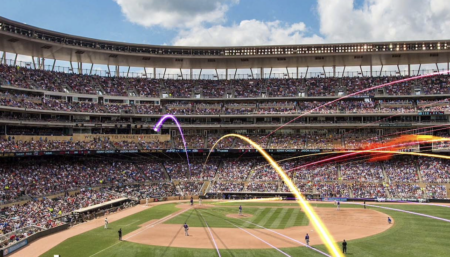With many groundskeepers around the world facing, or already in isolation due to government restrictions from Covid-19 measures, managing turf during this time is going to be a challenge. The Australian Sports Turf Managers Association (ASTMA) has put together a guide to help prepare and execute low-level maintenance for turf in light of changing practices and lack of staff.
The coronavirus crisis and subsequent government response to reduce its impact have forced many clubs and facilities in our industry to assess their business holistically, including course and turf management operations.
It has been extremely encouraging to see, over the past week, clubs and facilities working together to develop plans to remain operational and provide their local community and members with the significant resource we know they provide. We have seen clubs instituting split shift arrangements with their maintenance crews, implementing social distancing practices, increasing hygiene standards with course equipment and taking innovative measures out on course to reduce the possibility of community transition of the virus.
During this uncertain time, the ASTMA, through AGCSATech, is available for members who need assistance with turf management operations. The ASTMA is very mindful that sports turf managers will likely be called upon by management to adjust practices as organizations navigate their way through this difficult period.
The ASTMA continues to encourage all club and facility managers of the importance of including their turf manager in discussions relating to changes in operations and the potential impacts these may have from a turf management perspective. Superintendents and turf managers are dealing with a living, breathing product and any adjustment or change in its management needs to be carefully implemented and monitored.
Reducing inputs
While it is difficult to develop a program to suit each and every scenario, below is a list of points which may assist turf managers to maintain their turf surfaces over the coming months. The principles in the advice below can be applied to all turf surfaces, whether it be a single bowling green, a large golf facility or a council with multiple sports ovals across the municipality. The key points include:
- Monitor fertilizer applications, maintain plant health.
- Where possible, apply plant growth regulators (PGRs) to key surfaces to reduce the need for regular mowing.
- Effective water management planning – irrigation may need to shift towards preventing turf loss.
- Raise mowing heights on all surfaces 20-40% to assist in reducing turf stress.
- Solid tine key surfaces to reduce compaction and allow increased infiltration.
- If applicable, treat surfaces with pre-emergent herbicides.
- Large efficient mowers will allow you to effectively manage large turf areas and has the added benefit of reducing fuel costs.
Materials and consumables
Product suppliers will be working hard to keep the industry going during this difficult time. Contacting your suppliers to discuss your upcoming needs will assist them in making sure they have the required stock available when needed.
While it is difficult in some situations to predict what chemicals may be required over the coming months, there are a number of products that would be beneficial to have in stock. The purchase of a broad-spectrum systemic fungicide for key turf surfaces would be prudent as a backup for any potential disease outbreaks. Weed control will also be important; discussing the options of pre-emergent herbicides with your supplier could reduce the potential of weeds becoming a problem through winter and the following spring.
Reducing turf stress
Regular mowing at low heights requires additional inputs to maintain healthy turf. The key to reducing maintenance requirements at this time is to reduce the stress and therefore the input needed to maintain a healthy turf surface.
Where possible, aerating with solid tines (so no clean-up is required) will reduce compaction, increase soil aeration and allow rainfall to enter the soil profile more easily. Raising the height of cut will manage requirements for inputs while providing more photosynthetically-active tissue to produce carbohydrates for the plant.
Mowing
Mowing of turf surfaces will be required over the coming months. Developing a plan to assess which surfaces are to be maintained in their current format and those that can be adjusted is a prudent move.
Where practicable, maintain surfaces with similar machines. This may mean temporarily changing the shape of tee surfaces or potentially maintaining the tee and tee surrounds at the one height. If you have the benefit of multiple fairway mowers, one may be adjusted to maintain all tees and tee surrounds.
Reduce the frequency in which surfaces are cut. Slow-growing turf may only require mowing once a week or even once a fortnight. Increasing the height of your greens, for example from 3.0mm to 4.0mm, is a 25% increase in height. This will reduce the stress on the turf dramatically. Equally, increasing the height of your sportsfields or fairways 25% will have the same effect.
In the southern half of the country, warm-season grasses will be entering dormancy in the coming months. There will be ample opportunity in spring and the next growing season to bring surfaces back to a level through regular renovation practices.
Reduction of turf growth
Managing turf growth will reduce the need for mowing frequency. Sand-based profiles may require adequate fertilizer to maintain acceptable turf health.
Turn the water off
Manage irrigation applications to prevent turf loss, which will reduce turf growth and the requirement for regular cutting. This will also have an added benefit of saving on electricity costs at large facilities.





